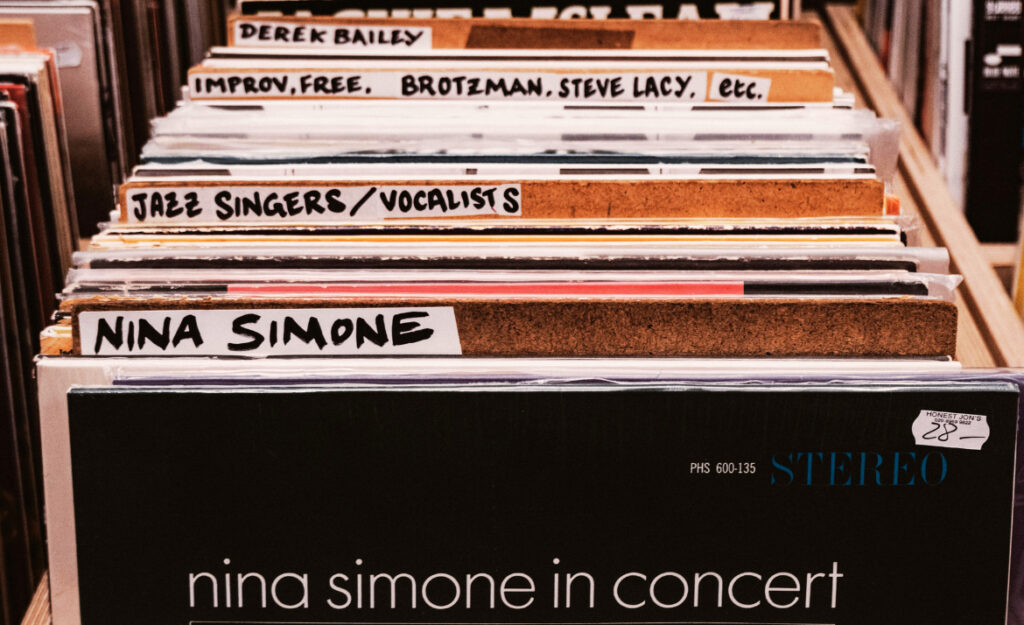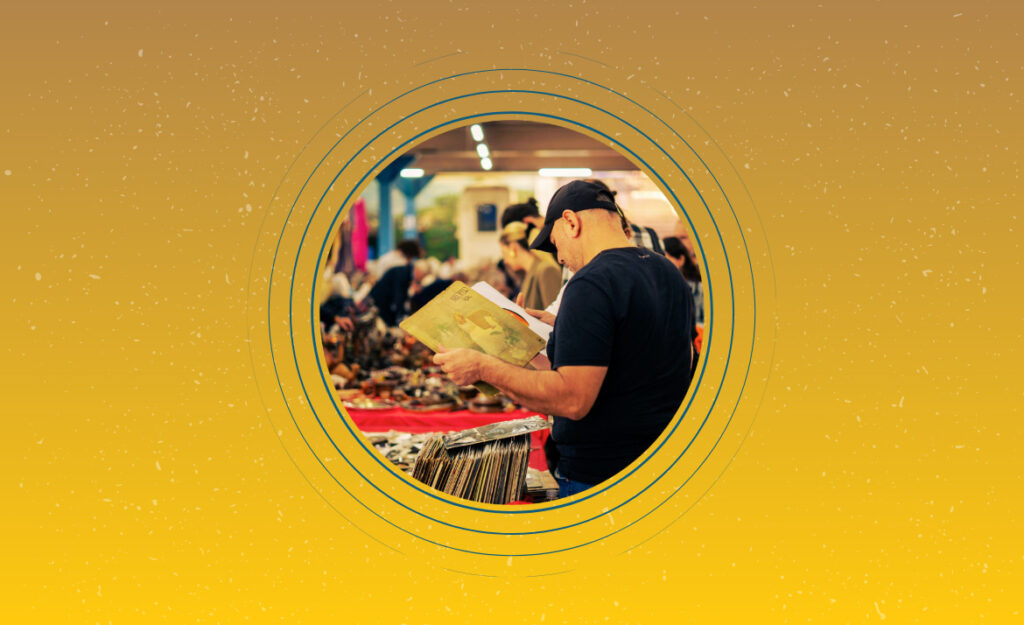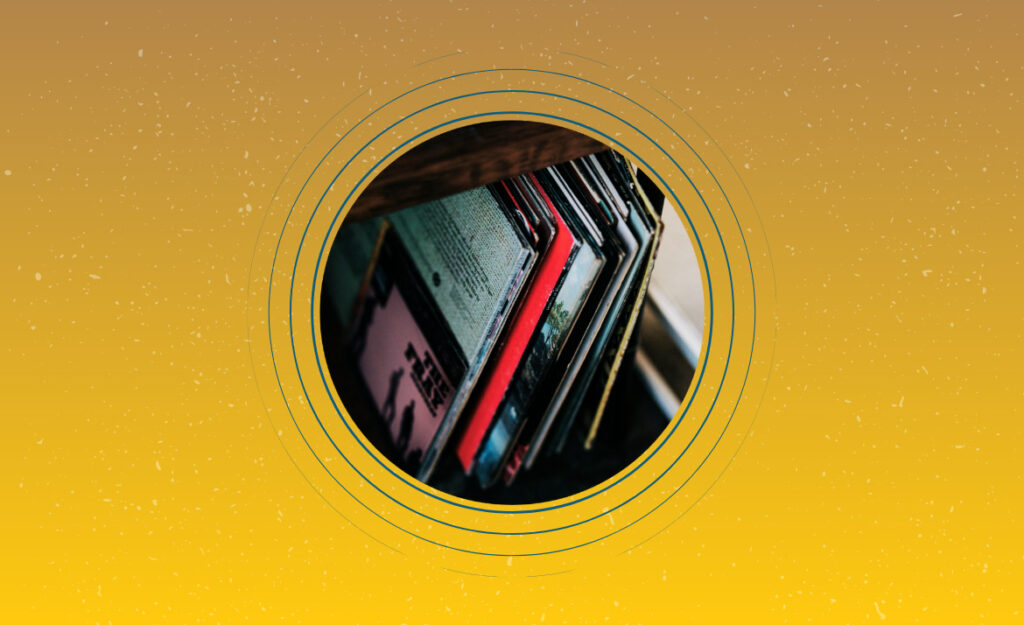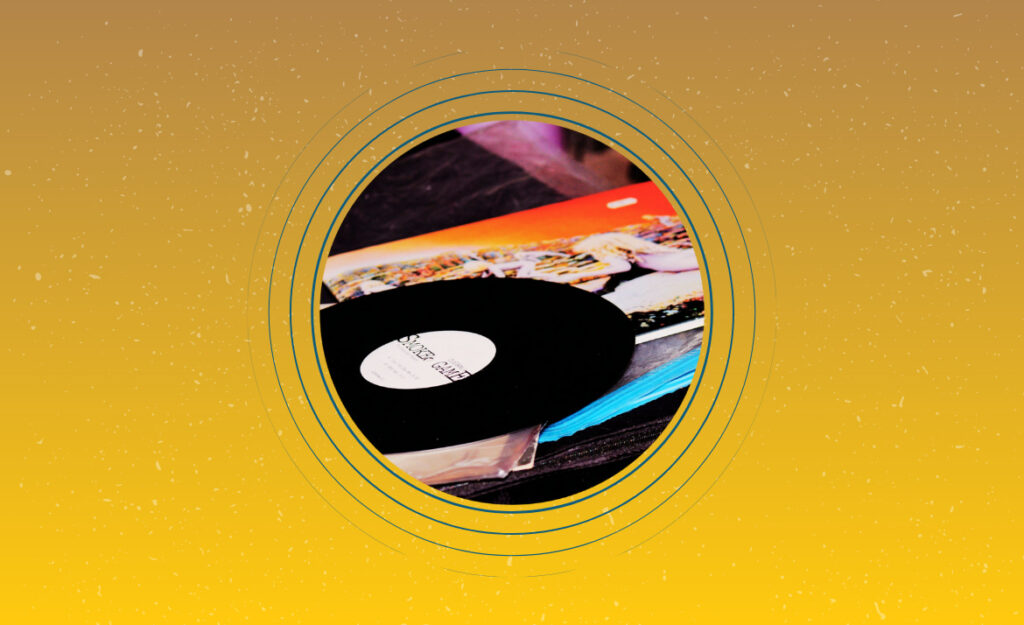
Spinning a vintage jazz album can feel like time traveling, especially when your copy holds true to the music’s original soul. In the world of music fans, jazz vinyl collecting brings together historical intrigue, tactile satisfaction, and deep listening rewards. Tracing these authentic sounds requires focused strategies to separate the remarkable from the merely recognizable.
Collecting jazz records isn’t just about owning artifacts; it’s about understanding the stories embedded in every pressing, label, or scratch. Jazz vinyl collecting lets you hold eras in your hands while sharpening your ear for yesterday’s magic. It becomes a journey that grows your taste and your sense of the music’s raw energy.
If you want to dig deeper into the roots, nuances, and genuine character of jazz on vinyl, you’re in the right place. Discover field-tested tips, insider scenarios, and actionable steps in this comprehensive guide. Let your passion for collecting be guided by the real signals of authenticity, value, and sonic pleasure.
Spotting True First Pressings: Avoid Modern Reissues
Learning to distinguish between original jazz pressings and later reissues sets the foundation for jazz vinyl collecting. First pressings typically deliver the true character of the intended sound, offering a touch of the history and emotion shaped in the original studio.
Experienced collectors learn to study key markers: labels, runout codes, sleeve construction, and print quality. They use notes like “This Blue Note has the 63rd St. address, not Liberty.” Small details separate landmark investments from pleasant but lower-value copies.
Recognizing Early Label Marks
The most authentic jazz records often feature classic label addresses, typography, and text arrangement. Early Blue Note albums, for example, show the 47 West 63rd label. You’d check the font weight, spacing, and even the color shade under good light, noting any misalignments.
Compare original Prestige, Riverside, or Columbia labels to modern variants by looking at font crispness and substrate gloss. Originals frequently have deeper textures and subtle color bleed—touch and sight together tell the story better than photos alone.
Use a side-by-side comparison with certified originals in collector forums or at record shows. Focus on what sellers say, their hand gestures pointing directly to matrix numbers or deep-groove indentations. Copy this: “Could you show me the runout number?” and check each digit.
Verifying Jackets and Inner Sleeves
Original covers include thick cardboard, sharp seams, and period-correct manufacturing codes. Later reissues feel lighter or use brighter, more modern inks. Run your finger along the spine—first issues won’t have refrigerator-magnet flexibility or swollen glue lines.
Check for telltale giveaways inside. Early pressings house generic paper inners or company-branded bags. Modern versions swap in plastic or elaborate facsimiles. An original Riverside sleeve with yellow paper and mild foxing feels specific in the hand and eye.
Ask sellers, “Did this LP come with any inserts originally?” Listen for hesitation or detailed answers. Take notes, especially about matching catalog numbers on both the jacket and label. If uncertain, jot “Research jacket code vs. label for authenticity.” Practice until these steps come naturally.
| Label | Visual Cue | Era | Action to Take |
|---|---|---|---|
| Blue Note | 47 W 63rd NYC text | 1950s-early 60s | Request full label photo |
| Prestige | Firework label | Late 1950s | Touch grooves, check texture |
| Impulse! | Orange/black ring | 1960s | Peel sleeve, check catalog number |
| Columbia | “6-eye” logo | Late 50s-early 60s | Confirm runout numbers |
| Verve | Silver T | Mid 1960s | Ask about original inners |
Sonic Character: Listening Beyond the Groove Surface
Preserving and discovering authentic jazz sounds means training your ear to separate the music’s core from surface imperfections. Jazz vinyl collecting is fundamentally about how much detail, space, and warmth is preserved in a pressing.
Collectors develop listening habits: play at moderate volume, use clean needles, and sample multiple tracks—not just the hits. Saying out loud, “I want to hear the horn’s placement,” sharpens your attention to nuance and fidelity.
Test Spins: What to Listen For
Play the record and focus on natural separation: Does the piano sit apart from the cymbals? Are solos distinct, or does everything blur on loud passages? Authentic jazz vinyl pressings provide a roomy, realistic timbre where each instrument claims its own sonic neighborhood.
- Play with neutral EQ: Catch the honest character without color from your amp.
- Check intro and outro grooves: Evaluate noise before the music starts and after it ends.
- Listen for tape hiss: Some original recordings carry a gentle hiss—expected and authentic.
- Assess stereo field: True pressings present instruments with spatial depth and believable width.
- Compare against digital: If possible, sync a digital version for A/B comparison, noting energy and warmth differences.
Every listening session grows your ability to spot real detail. Building this skill anchors your jazz vinyl collecting to sonic truth, far from counterfeit glow or remastered sheen.
Advanced Sonics: Exploring Micro-Details
Move the record from system to system: One turntable might highlight the brushwork in a drum solo, while another might tame sibilance in the vocals. Take notes each time and build a mental map of what ‘real’ sounds like on your equipment.
- Switch to headphones for close-up inspection of subtle reverb trails behind horns and vocals.
- On vintage mono LPs, flip the mono switch if you have it and compare soundstage snap against stereo playback.
- Capture a 30-second phone recording for reference—never for sharing, just so you can A/B at the shop next visit.
- Invite a friend to listen blind and describe where they hear the ‘center’ of the music, checking their perception against yours.
- After each test, step back and write a one-line review: “This copy keeps the sax smooth, even in loud spots.” Let these reviews guide your future purchases.
Deep, repeat listening builds your jazz vinyl collecting intuition over time. You’ll know when that trumpet’s bite or bass’s warmth matches stories from the original studio.
Condition Grading: Assess Value Without Guesswork
Knowing exactly what true condition means sets apart a casual jazz vinyl collecting enthusiast from a savvy curator. Record grades aren’t just numbers—they’re actionable signals for value, enjoyment, and long-term satisfaction.
Collectors avoid “VG++” claims without proof, instead using real inspection steps and a shared language with sellers, like “Show the play side under light” or “Let me hear the noisiest part.”
Visual Grading Step-By-Step
Hold the vinyl under strong but indirect light. Rotate so all surface marks become visible. Focus on the play surface, ignoring label scuffs or fingerprints unless they signal deeper neglect. A truly clean copy exhibits only faint lines that can’t be felt.
Check spindle holes for sign of repeated mishandling—a widened hole or jagged paper hint at improper handling. Bright label colors with crisp text confirm less exposure to sun or moisture.
Brush with a carbon fiber brush, then run a microfiber gently over the grooves. If dust and static stick quickly, the storage environment may have been subpar. This habit keeps your grading honest and repeatable.
Play Grading Insights
Drop the needle at the quietest track—often intros or ballads reveal noise that up-tempo tracks mask. Jot down every pop, click, and underlying hiss at regular volume—no turning it down. Ask yourself: “Is music always louder than the noise?” If not, downgrade the grade.
Check side transitions: Light whooshing between tracks stays normal for vintage pressings, but thuds or thumps suggest warping. If skips occur, confirm your tracking force with a scale, not just by feel.
As you play grade, use consistent test spots on multiple records for apples-to-apples comparisons. Say out loud, “This copy is silent in the bass solo—move up a grade,” and keep these standards across all your jazz vinyl collecting sessions.
| Grade | Visual Cue | Audio Result | Next Step |
|---|---|---|---|
| Mint (M) | No visible marks | Dead quiet | Store upright, consider a premium sleeve |
| Near Mint (NM) | Tiny sleeve scuffs | Faint crackle only | Grade honestly, price with confidence |
| Very Good Plus (VG+) | Some light marks | Light background noise | Listen through, regrade after clean |
| Very Good (VG) | Obvious line scuffs | Noticeable surface noise | Discount, use as play copy |
| Good (G) | Heavy wear/warp | Distracting noise/skips | Avoid for serious collecting |
Provenance Matters: Documenting Each Record’s Story
Established jazz vinyl collecting experts always ask about a record’s provenance—its origin, path, and who’s owned it. The more you know about the backstory, the more informed your value opinions become—and future trades stay transparent.
Use a simple log: album title, matrix number, previous owner’s notes, and purchase context. This simple checklist keeps your collection resilient when selling or loaning. For example, jot down, “From A. Green’s estate sale, Newark NJ, 2022, plays strong NM.”
Handling Original Receipts and Inserts
Always request original receipts or store promotional stickers when buying large lots or high-dollar jazz vinyl. These extras bolster authenticity and help confirm purchase timing. Add a ziplock folder to your storing routine for paper inserts or registration cards found inside old sleeves.
If a seller offers a contemporary printout as proof, take notes but prioritize originals with aged type or period ink. Receipts from historic jazz shops add not just provenance, but a slice of local culture interwoven with your new acquisition.
For rare titles, take a photo of the seller holding the LP (with their permission). Label the image with date, time, and locale for future reference. This casual habit cements your collection’s documented trust in the jazz vinyl collecting community.
- Request a purchase log for any high-value LP: Increases sales credibility and recall.
- Photograph rare matrix inscriptions before cleaning: Prevents confusion or dispute down the road.
- Keep notes about oddities, repairs, or prior owner’s cleaning instructions: Adds color to your records’ history.
- Ask about family estate provenance: Sometimes, you’ll hear stories about famous gigs or autograph lines.
- Use acid-free bags for any vintage paperwork: Guards against foxing or fading inside sleeves.
Networking for Hidden Jazz Vinyl Gems
Your jazz vinyl collecting circle becomes a goldmine for trading discoveries and avoiding disappointments. Every connection expands your exposure to rarities nobody shouts about online.
Approach local record shops or collector fairs with the question, “What’s one jazz LP here you’d save in a flood?” This conversation-starter gleans staff favorites and overlooked bins faster than browsing solo.
Attending Collector Meetups
Show up with a want-list ready and a short description of why you love certain artists (“I chase deep groove Mingus with original jackets”). Respectful curiosity opens doors to behind-the-counter trades or off-menu sales at shows.
Take notes about body language: An eager nod signals readiness to talk collection secrets, while a sidelong glance means try again at the end of the day. Thank everyone—even if you don’t buy—since today’s chat might spark tomorrow’s tip.
The more you return to out-of-town fairs or mail-order communities, the more folks recall your jazz vinyl collecting passion. Simple scripts work: “Can you show me your best ‘50s Savoy?” and, “Do you have anything with the original obi?” lead straight to the best finds.
Joining Online Vinyl Forums
Register at jazz-focused web forums under your real name if possible (it builds trust). Post pictures or pressing details, and describe sound with realism: “Clear highs, punchy kick, just a little crackle during solos.” Give honest reviews to encourage reciprocation and private leads.
Skip broad praise posts and instead ask about specifics (“Which RVG-stamped Blue Notes in mono truly beat their stereo siblings?”). Use private messages sparingly and professionally; don’t spam seeking deals, but respond promptly to tips given.
Share what you learn with credits—online etiquette matters deeply. Say, “Thanks to M. Turner for the Prestige comparison notes,” or, “DocFunk tipped me to this label variant.” Each exchange brings your jazz vinyl collecting knowledge up a level and strengthens community ties.
Storage and Cleaning: Actions That Protect Lasting Value
Practical storage and cleaning keep your jazz vinyl collecting investment playable for generations. Skipping these steps risks warping, permanent dirt-embedding, or label stains, undermining years of careful selection.
Adopt single-handling rules: Touch only the edges and label centers, never greasy fingers to grooves. It’s like museum protocol—protecting a masterpiece, and keeping value and sonic fidelity intact at the same time.
Storing Jazz Vinyl Properly
Shelve records upright, supported by sturdy bookends. Avoid leaning, which bows jackets and warps discs. Insert each record in a fresh polyethylene inner sleeve before returning to its jacket. Keep temperature stable, away from heaters and direct sunlight.
- Shelve LPs vertically to prevent warping—always leave one finger width of air above for easy sliding.
- Use acid-free outer sleeves: Stops dust and shelf wear from breaking down cover artwork.
- Label each shelf by era or label—saves search time and prevents excess flipping and handling.
- Rotate large collections periodically to avoid long-term pressure on corner LPs.
- Keep records away from kitchen and bathroom areas—moisture risks mildew and sleeve warping faster than you think.
Essential Cleaning Routines
Before each play, swipe grooves with a carbon brush. About monthly, deep-clean with a record washer solution and gentle cloth, keeping circular motions with light pressure. For heavy soiling, consider a vacuum-based cleaning machine—well worth it for preserving both play and grade.
Avoid using tap water or kitchen cleaners; residue lingers and can degrade the vinyl’s shine and sound. Inspect every cleaned LP under strong light once complete—repeat if micro-dust remains.
Document every cleaning session, jotting dates and methods in your collector log. Years later, you’ll prove that prized record’s play history, supporting jazz vinyl collecting’s top value claim: authenticity verified by care.
Drawing Inspiration From Classic Jazz Collector Stories
Recounting real collector experiences inspires jazz vinyl collecting progress and reveals the habits that cultivate authentic finds. Veteran collectors, after decades in the hunt, have developed their philosophies and strategies—everyone’s path can influence your own.
Meetups and interviews often yield memorable one-liners. One seasoned fan said, “When I found my mono Brubeck at a church sale, I just froze for a second, looked around, and checked for scratches before making a sound.” This behavior tells us to inspect, confirm, then celebrate finds silently.
Mini-Stories for Building Confidence
Imagine hunting at a thrift shop and noticing an original Blue Note from the corner of your eye. Instead of darting for it, you maintain composure, check that the seller’s watching, then calmly pick and inspect in place. The experienced collector stands out for subtle moves and careful pace.
At a family estate sale, you come across a collection with handwritten notes in sleeves. You scan for names, then confirm stories with the organizer. Recording provenance aloud as you browse, “This belonged to a local jazz club owner,” ensures you won’t forget crucial details.
Upon discovering a mislabeled Miles Davis at a flea market, refrain from outward excitement. Casually ask, “Is this the only copy, or are there others in boxes?” A measured approach helps you negotiate from a position of strength, reinforcing a collector’s mindset.
Applying What You Learn as a Collector
Keep a portable notebook for jotting down label quirks, seller oddities, or cleaning observations. Sketch runout codes when photos aren’t possible, building a field guide unique to your jazz vinyl collecting journey. These accumulated notes become a personalized collector’s resource over time.
Trading tips with newcomers preserves community knowledge. Share one-sentence tips like “Browned spines sometimes signal smokers’ homes, so double-check smell before buying.” Each new connection in the vinyl community strengthens your collector confidence and trust network.
Embrace slow browsing and storytelling: Enthusiastic collectors know the hunt is as rewarding as the album. Whether reliving a swap meet score or writing online thank yous, these micro-stories become the fabric that holds your jazz vinyl collecting adventure together.



